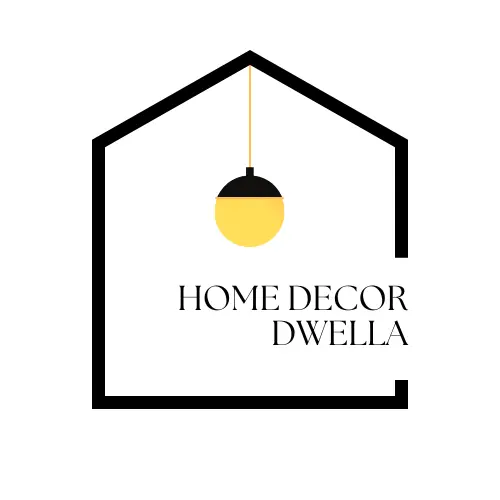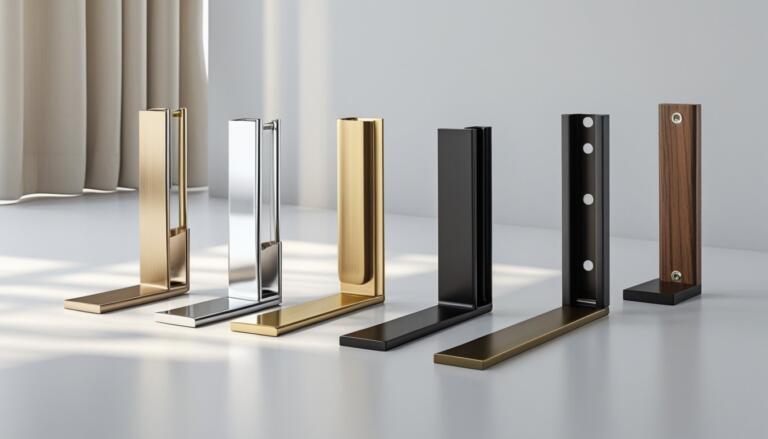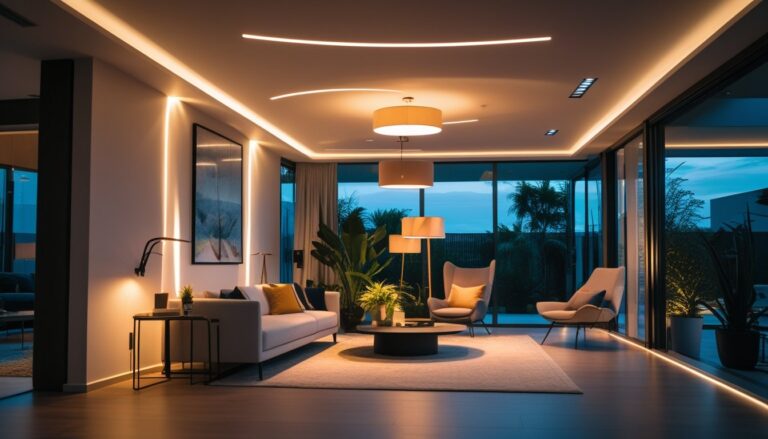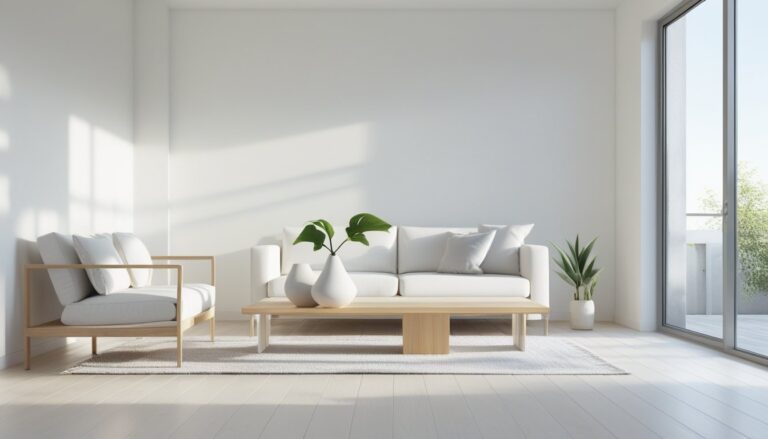7 Home Gym Design Ideas for Effective and Space-Smart Workouts
Creating a home gym offers a convenient way to stay active without leaving the house. Many people want a space designed to fit their needs and motivate them to exercise regularly. A well-planned gym area can help make workouts more effective and enjoyable.
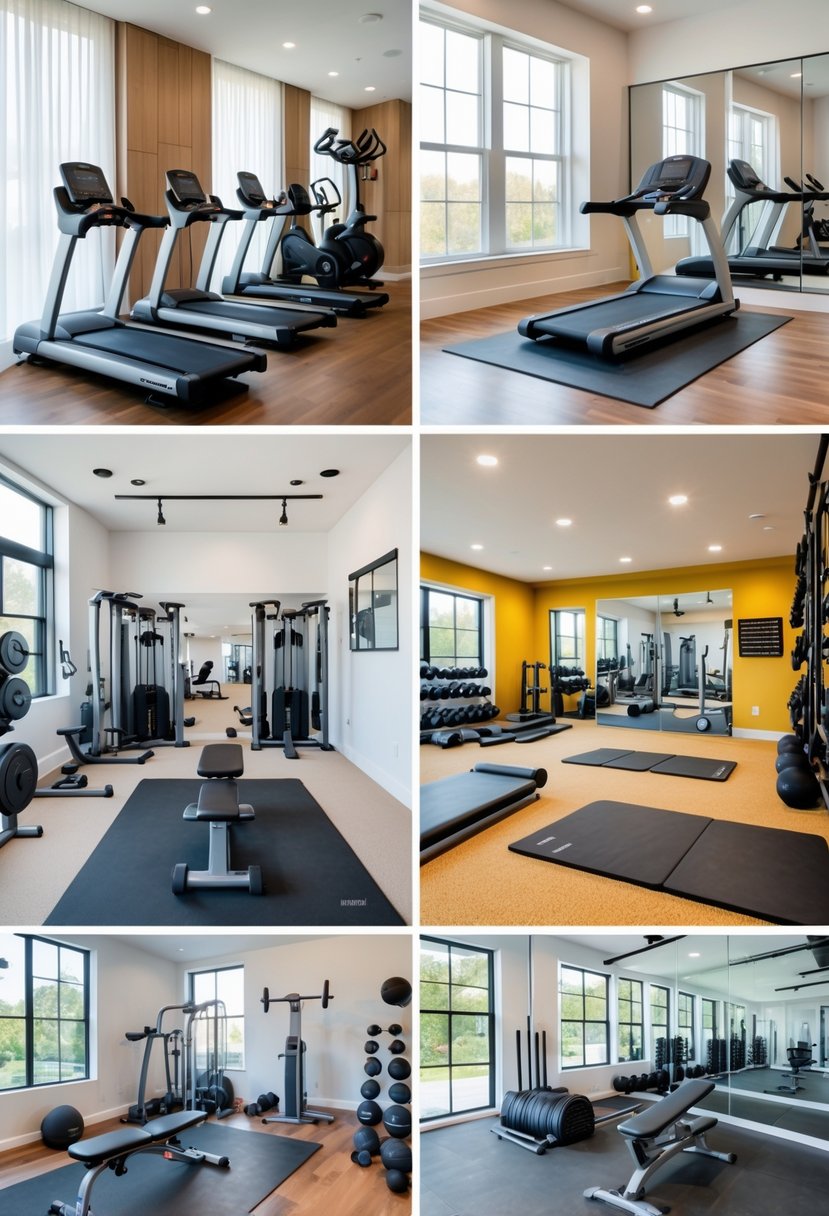
The key to a successful home gym is designing a space that is both functional and inspiring. This article will explore ideas to help set up a home workout area that meets these goals. It covers ways to make the most of any room or corner while keeping the space practical and inviting.
1) Maximize natural light to create an energizing workout space
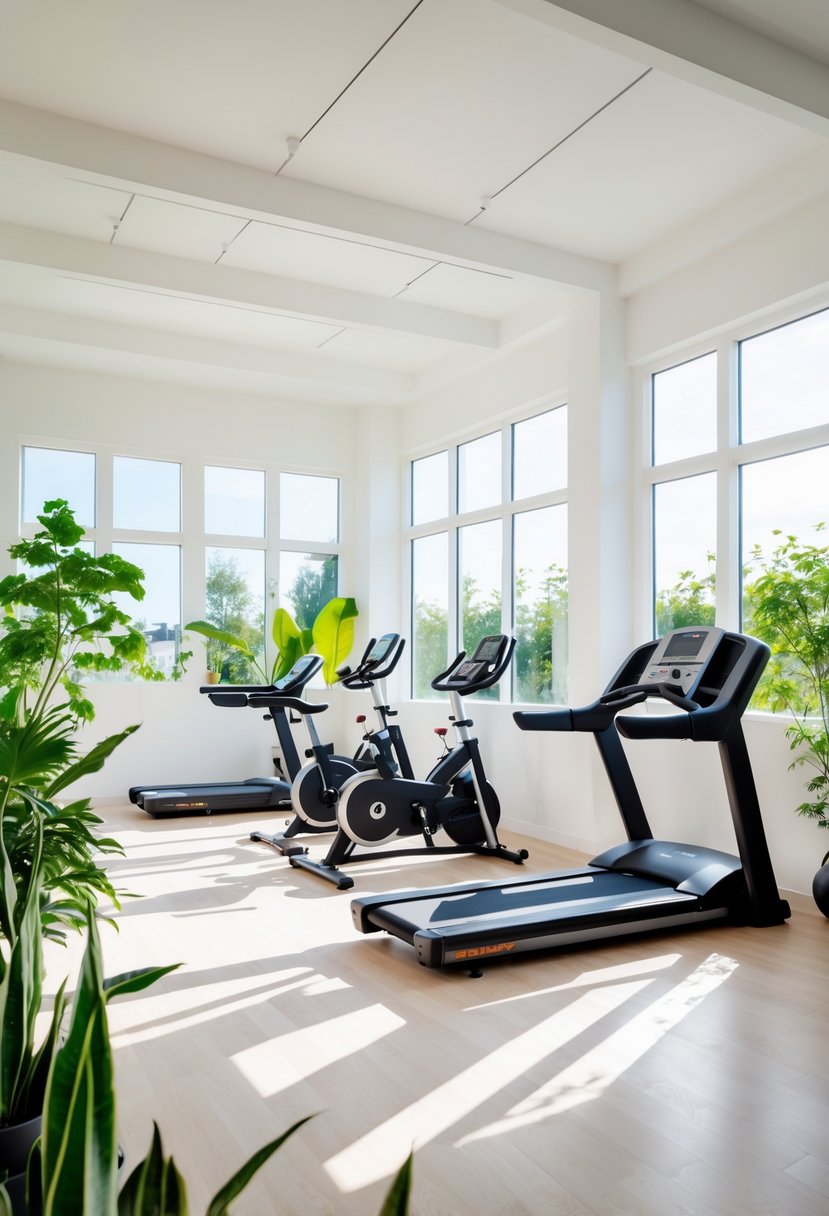
Natural light helps make a home gym feel more open and inviting. It can improve mood and boost energy during workouts.
Placing the gym near windows or glass doors lets in daylight, which reduces the need for artificial lighting.
Removing heavy curtains or blinds can increase brightness. This creates a fresh and motivating environment that supports consistent exercise.
2) Install wall-mounted floating shelves for effective equipment storage
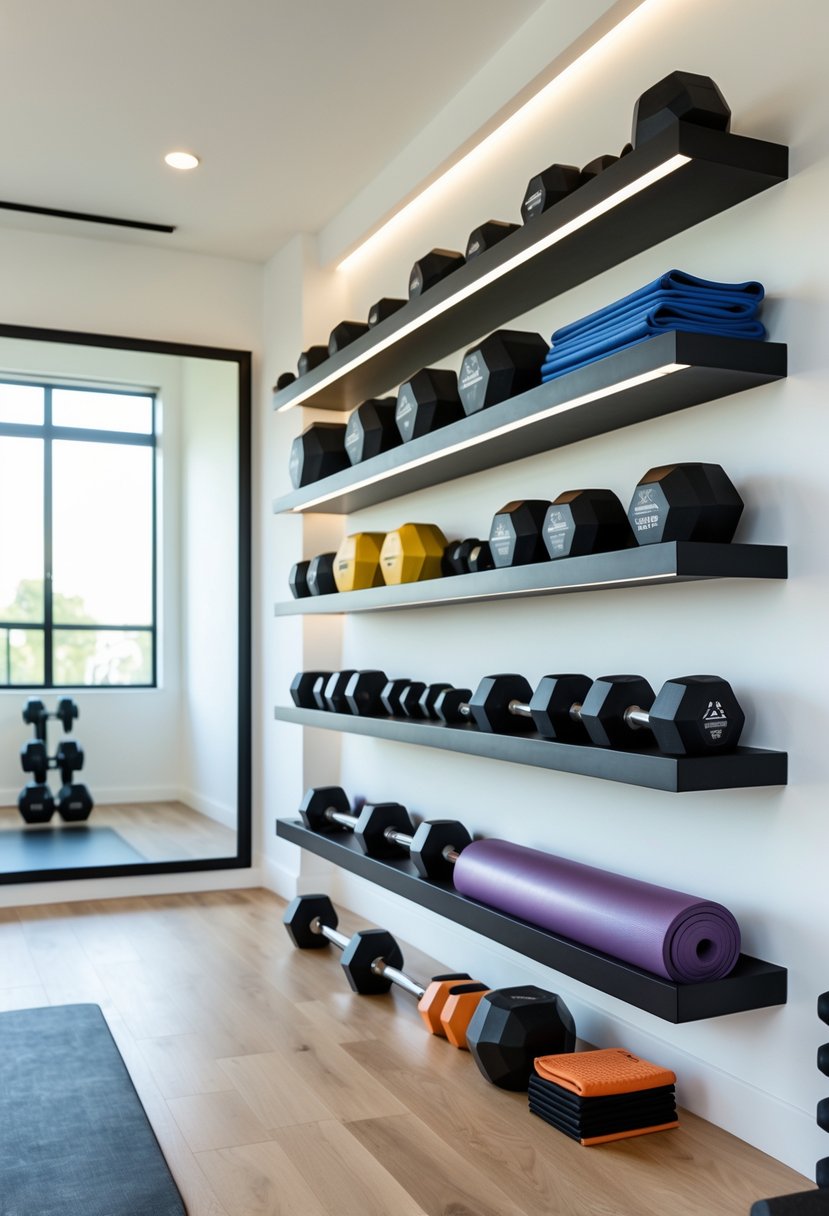
Floating shelves save floor space and keep gym equipment organized. They attach directly to the wall and hide their supports, creating a clean look.
Proper installation is important. Shelves should be anchored to wall studs to hold weight safely.
These shelves are good for storing smaller items like dumbbells, resistance bands, or towels. They keep equipment visible and easy to reach.
3) Designate a specific zone for cardio machines like Peloton or NordicTrack
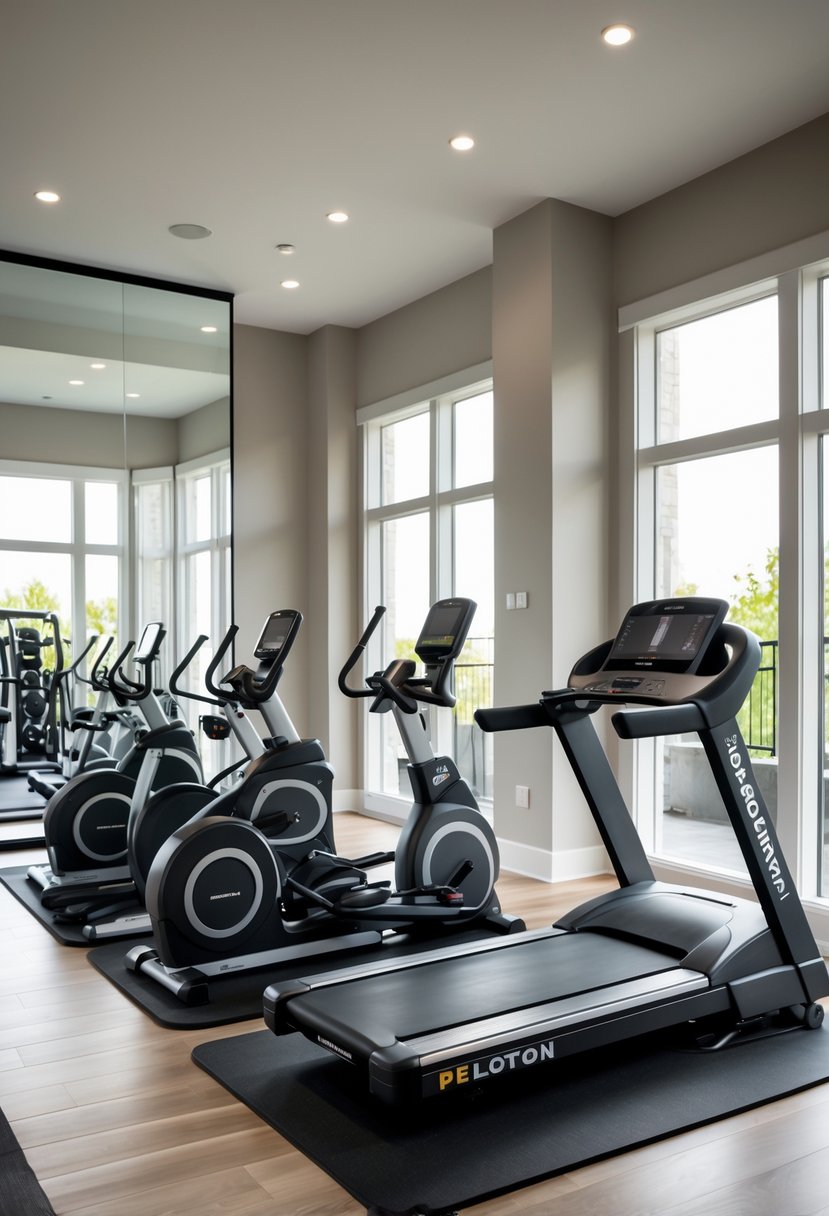
He should create a clear area for cardio equipment such as Peloton bikes or NordicTrack machines. This keeps all cardio workouts in one spot, making the routine easier to follow.
The zone needs enough space for safe movement around machines. Proper spacing helps avoid accidents and makes workouts more comfortable.
Placing the cardio zone near a window or where airflow is good can improve comfort. Good lighting also helps keep the area inviting and motivating.
4) Incorporate mirrors to enhance space perception and form checking
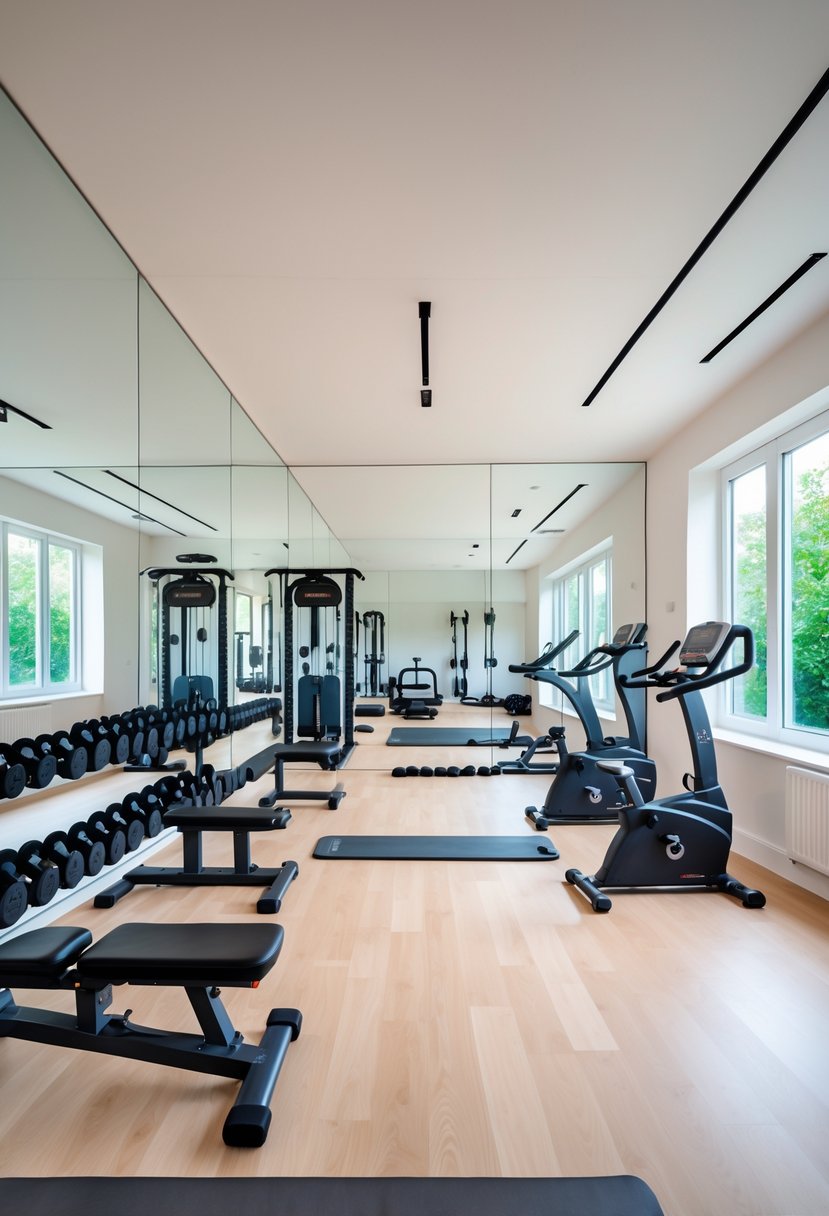
Mirrors help make a home gym feel larger by reflecting light and creating an illusion of space. This is useful in small rooms where every inch counts.
They also allow people to watch their form while exercising. This helps prevent injury and ensures exercises are done correctly.
Proper placement of mirrors can improve both the function and look of the gym. It adds a clean and professional touch to the workout area.
5) Use rubber flooring tiles for durability and easy maintenance
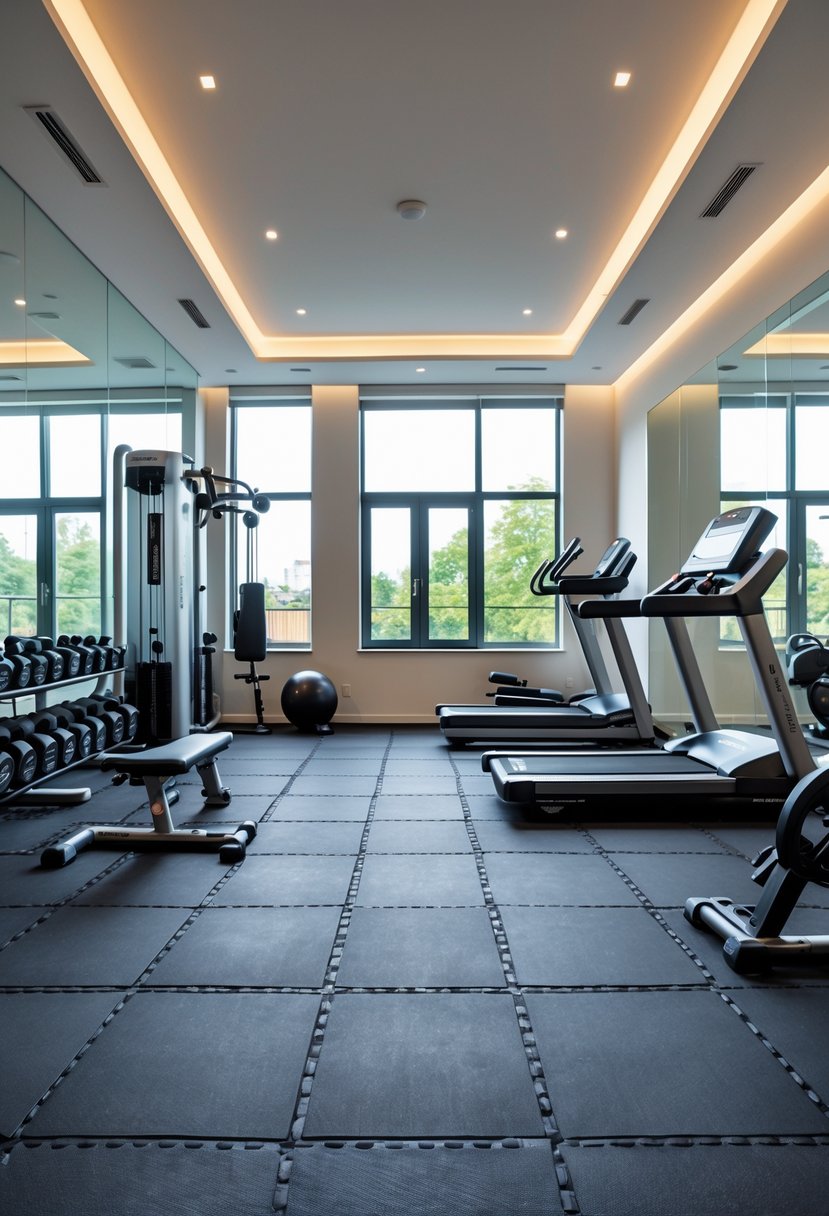
Rubber flooring tiles offer a durable surface that can handle heavy gym equipment and high foot traffic. They resist damage from weights and provide shock absorption, protecting both the floor and the user.
The tiles are easy to clean and maintain. Spills and sweat wipe away quickly, making it a practical choice for a home gym.
Installation is simple, often using interlocking tiles that fit together without glue. This allows for easy replacement of damaged sections.
6) Create a calming yoga corner with mats and minimalistic decor
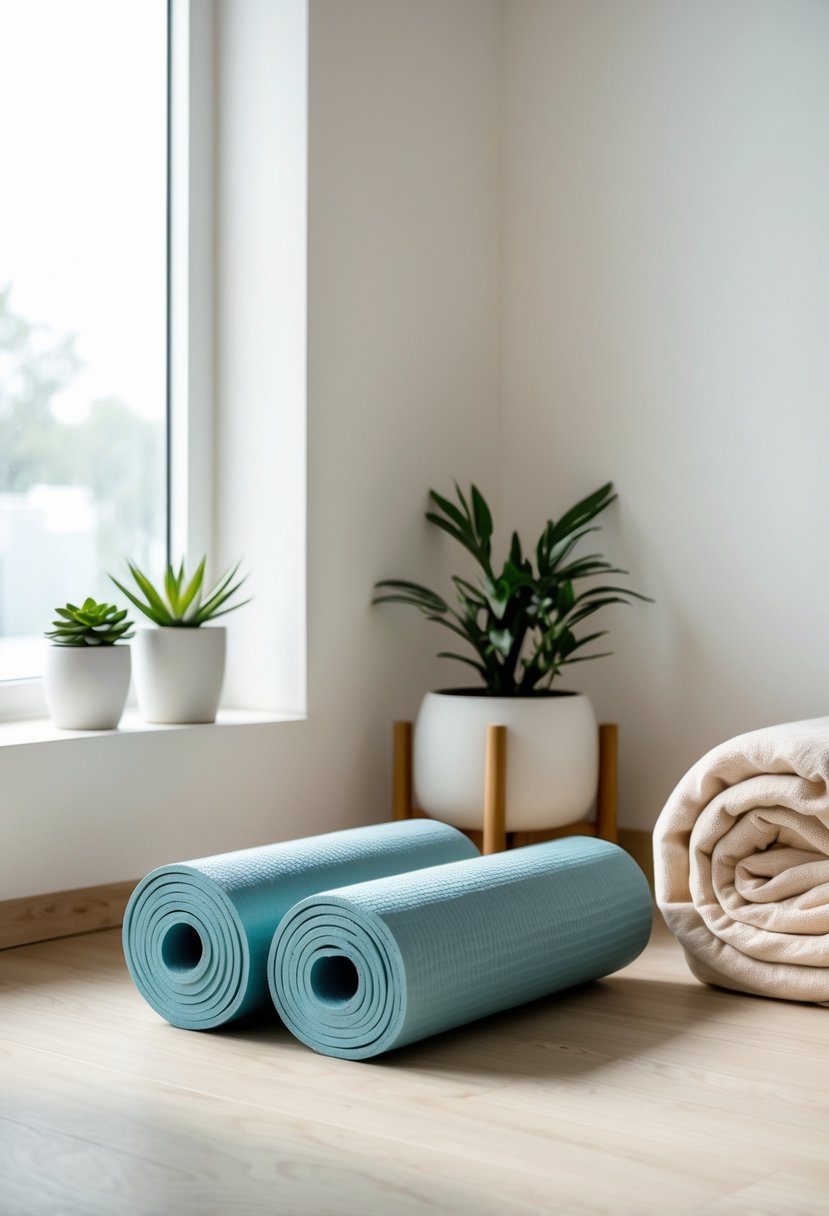
They can set up a quiet yoga corner using just a mat and a few simple items. Keeping decorations minimal helps maintain focus and calm.
Soft lighting and a small plant can add a peaceful touch without clutter. Using neutral colors creates a clean, serene feel.
The space should feel open and inviting. A calm yoga corner supports regular practice and relaxation in the home gym.
7) Add smart lighting with adjustable brightness and color temperature
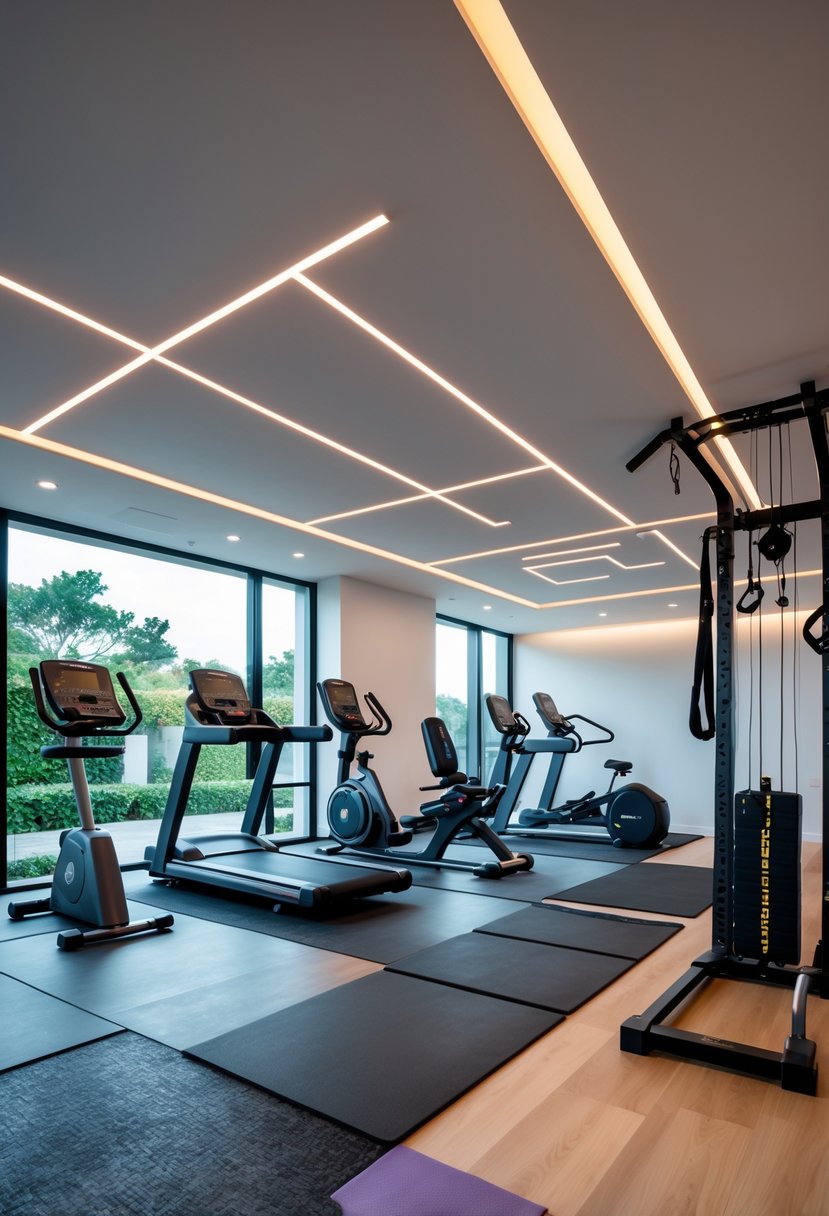
Smart lighting allows users to change brightness and color temperature to fit different workouts. It helps create the right mood, whether for high energy or calming cool downs.
Adjustable lights can mimic natural daylight, which supports focus and safety during exercise. They also can be controlled by apps or remotes for easy customization.
This flexibility makes the gym space more functional and comfortable. It also supports a healthy daily rhythm by adjusting light throughout the day.
Key Design Principles for Home Gyms
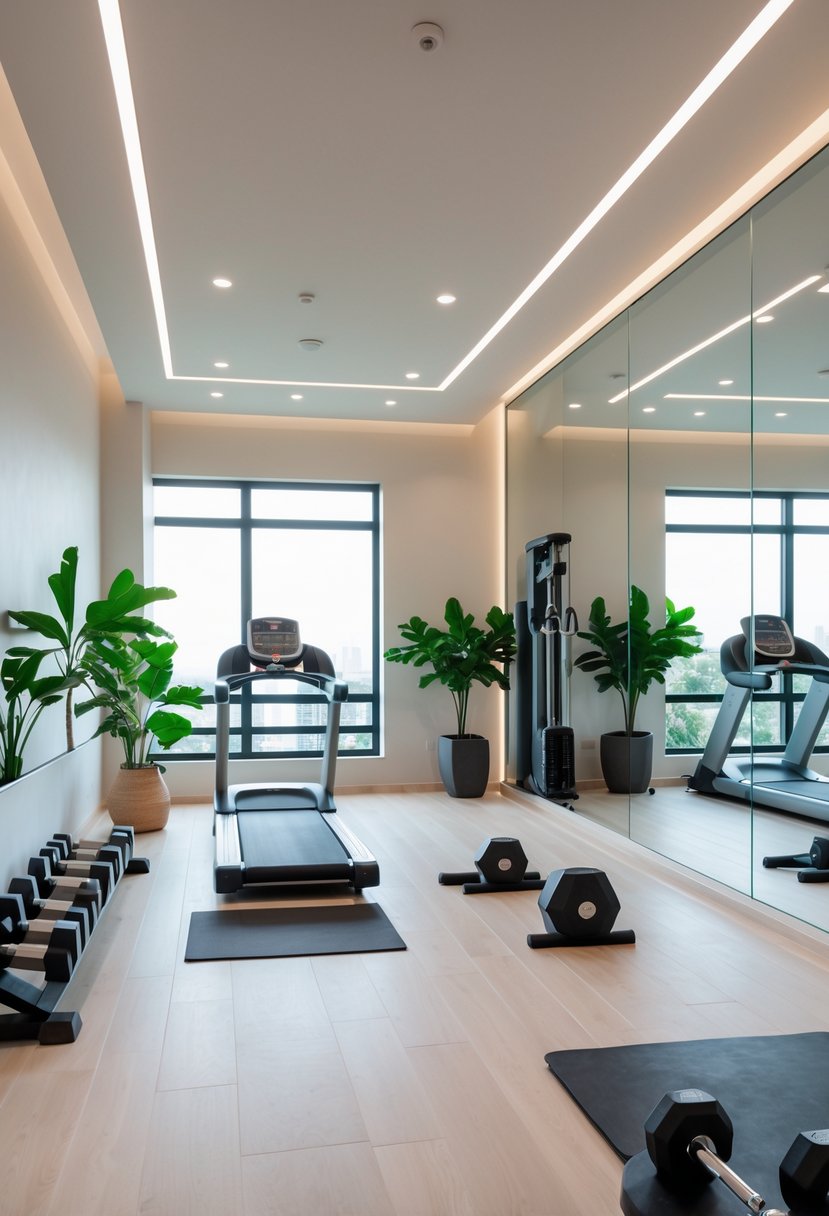
A well-designed home gym focuses on how space is arranged, lighting quality, and the type of flooring used. Each of these elements directly affects comfort, safety, and the ability to exercise effectively.
Optimal Layout Planning
The layout should allow enough room for all planned activities and equipment. This means placing larger items like treadmills or weight racks against walls, leaving the center open for movement.
Space for stretching or bodyweight exercises should be clear and free from clutter. It is important to consider how one moves between machines to avoid interruptions during workouts.
Storage solutions help keep smaller items organized and out of the way. Using vertical space with shelves or hooks maximizes the area, especially in tight rooms.
Effective Lighting Solutions
Natural light is best because it reduces eye strain and improves mood. If windows are limited, full-spectrum LED lights can mimic daylight and keep the area bright.
Avoid harsh overhead lights that create shadows or glare on equipment. Instead, soft, evenly distributed lighting improves visibility and comfort.
Using dimmable options lets users adjust brightness for different times of day and moods. Well-placed mirrors can reflect light and make the space feel larger.
Flooring and Acoustic Considerations
Flooring must support activity type and protect both the user and the floor beneath. Rubber mats are common because they absorb impact and prevent slipping.
For heavy equipment, thicker and denser flooring reduces noise and damage from dropped weights. Foam tiles are better suited for stretching or low-impact workouts.
Acoustic treatment limits echo and noise transfer, especially if the gym is near living spaces. Adding rugs or soundproof panels can help maintain a quieter environment.
Enhancing Motivation and Functionality
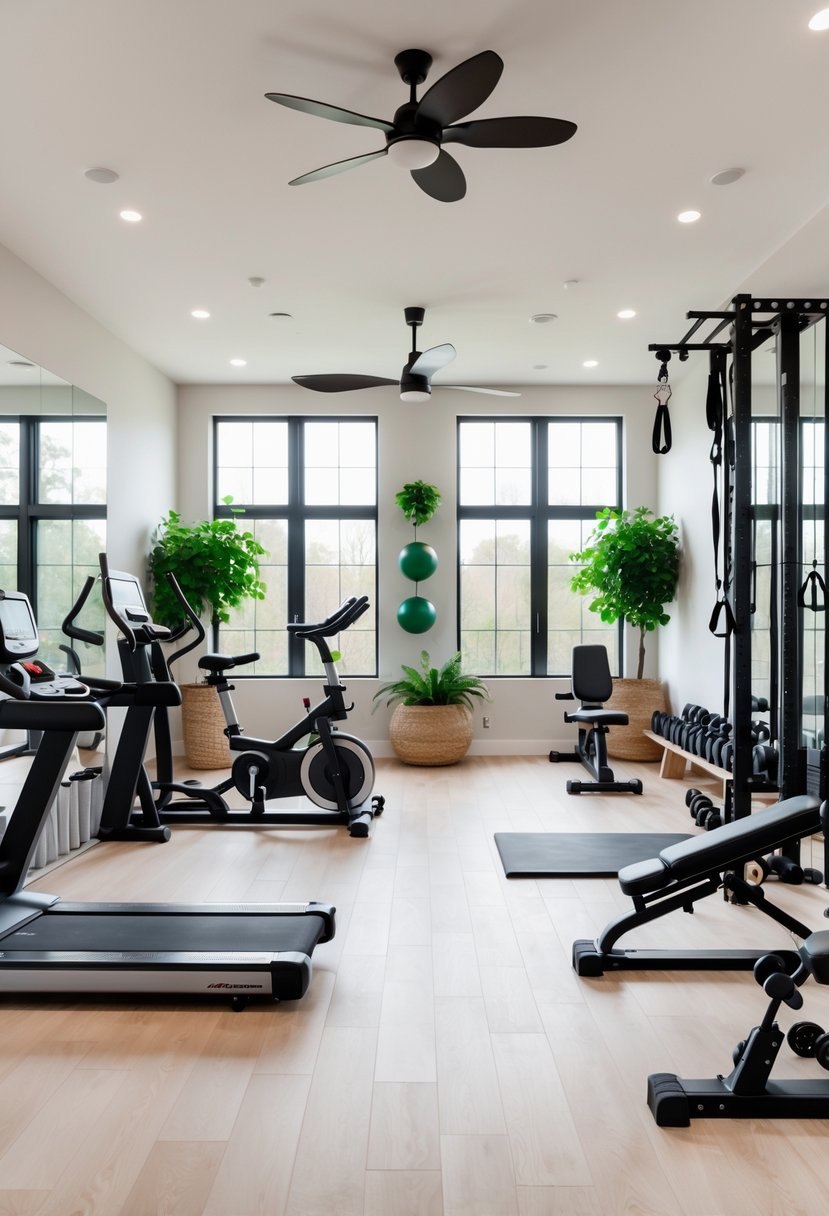
A well-designed home gym should boost motivation and support efficient workouts. This can be done by adding inspiring visual elements and using technology that tracks progress and simplifies training.
Incorporating Inspirational Elements
Adding motivational features keeps users focused and energized. This can include placing mirrors to improve form and create a feeling of openness. Large artwork or posters with fitness quotes work well to maintain a positive mindset.
Color choice matters. Bright colors like orange and red can increase energy, while soft greens and blues offer calm during cool-downs. Proper lighting, especially natural light or adjustable LED lights, helps keep the space inviting.
Storage solutions reduce clutter. Organized equipment makes the gym look professional and encourages regular use. Clear labels on shelves or bins help users quickly find what they need without losing time.
Integrating Smart Technology
Smart devices improve workout tracking and convenience. Fitness mirrors that display real-time feedback on movements help users correct form and stay motivated. Apps synced with equipment can log workout stats automatically.
Wearable fitness trackers or heart rate monitors connect to home gym systems for a detailed view of performance. This data motivates users to set and meet specific goals.
Smart speakers and voice control can adjust music, lighting, or workout programs hands-free. This improves the experience by keeping the user focused and uninterrupted.
Incorporating technology also allows easy updates to workout routines. With new exercises and virtual coaching available on demand, users stay engaged and continuously challenged.
Frequently Asked Questions
This section covers key topics like the must-have equipment for a home gym, ways to save space, the best flooring options, and how to keep the gym well-ventilated. These details help create a functional and comfortable workout area that fits different needs and room sizes.
What are essential pieces of equipment for a home gym?
Essential equipment often includes a set of dumbbells or adjustable weights for strength training. Cardio machines like a treadmill or stationary bike offer good cardiovascular workouts.
A sturdy bench and resistance bands add versatility. Mirrors are also useful for checking form during exercises. Shelves or storage solutions keep smaller gear organized.
How can I maximize space when designing a small home gym?
Using wall-mounted floating shelves saves floor space while storing equipment. Placing cardio machines in a designated zone helps keep the area organized.
Mirrors can create a sense of more room and improve exercise form. Maximizing natural light brightens the space and boosts energy during workouts.
What kind of flooring is best for a home gym?
Rubber flooring tiles are durable and easy to clean. They provide good shock absorption and protect the floor from heavy equipment.
For smaller spaces, interlocking tiles can be added or removed as needed. Avoid hard surfaces that can cause injury or damage to equipment.
What are effective ways to ventilate a home gym?
Good ventilation can be achieved by using windows to let fresh air in. Installing a ceiling fan or portable fans helps circulate air during workouts.
Avoid poorly ventilated rooms to reduce odors and humidity. Proper airflow keeps the space comfortable and safe.
